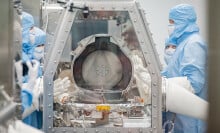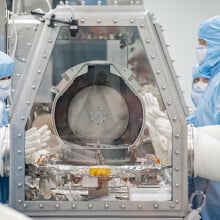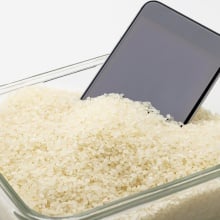Iceland's much-anticipated volcanic eruption has begun. It's an impressive natural show.
The livestreamed footage, from the Icelandic National Broadcasting Service, shows towering fountains of lava erupting from a long fissure in the ground.
Fortunately, it's not happening in an urban area. After a flurry of earthquakes over a month ago — a telltale sign of a looming eruption — officials evacuated the popular tourist town of Grindavik. The lava now spurting and oozing from the ground is currently flowing north, away from Grindavik.
Enjoy the natural theater: All at once, it's awesome, violent, and beautiful.
"Volcanoes are more glorious than the best Fourth of July fireworks display," Jess Phoenix, a volcanologist and president of the board of directors of the environmental research organization Blueprint Earth, told Mashable when a different area of Iceland erupted in 2021.
Tweet may have been deleted
Iceland is a volcanic world: The entire Kentucky-sized island is composed of different types of volcanic rock. It lies where two of the great tectonic plates on Earth (the North American and Eurasian plates) meet in the Atlantic Ocean, called the Mid-Atlantic Ridge. The plates are moving apart from each other, and below Iceland a plume of molten rock rises up from this geologically dynamic zone — and sometimes erupts onto the surface.
Some Icelandic eruptions are explosive, like in 2010 when the volcano Eyjafjallajökull blew enough ash into the air to close some 300 airports in Europe for about a week. That's largely because it erupted through an ice-capped summit. Ultimately, that eruption canceled over 100,000 flights.
"Volcanoes are more glorious than the best Fourth of July fireworks display."
But this latest eruption is different. The molten rock, or magma, is erupting straight from the ground. And on Iceland, this magma tends to be oozy and runny — similar to Hawaii — which often results in lava flows as opposed to giant volcano explosions. (In contrast, when magma is much thicker and stickier, with a higher silica content, the molten rock tends not to flow. It stays underground and can build up enormous amounts of pressure and heat — sometimes resulting in violent, explosive eruptions, like the Mount St. Helens eruption in 1980.)
We'll see how this most recent Icelandic eruption plays out. Until then, enjoy the lava fountains.



























